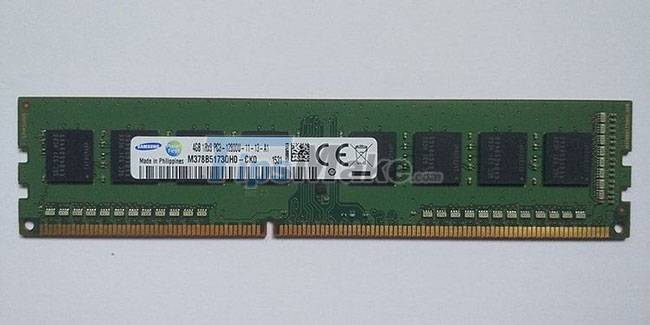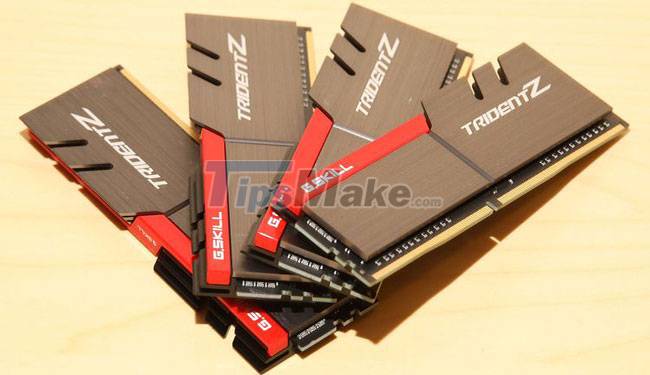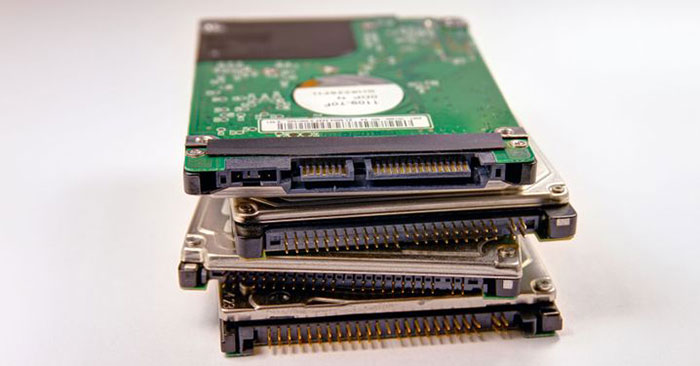How to find motherboard compatible RAM
Too many things from gaming, entertainment to our lives and work depend on computers, so regular PC upgrades have become quite a necessity. However, buying a brand new computer when the old one is still in good working order is wasteful. Especially since you can often upgrade the RAM to provide enough extra performance to tackle heavier workloads.
When upgrading an old system, RAM and storage are the two most obvious parts that you can change. Since RAM often gives a noticeable performance boost, focus on finding the correct RAM for your motherboard.
Laptop (SODIMM) and desktop (DIMM) RAM
When looking for compatible RAM for a computer, one of the first things to consider: Is it a laptop or desktop computer. Both types have the same essential parts: CPU, GPU, and RAM. But be aware that these parts will have different form factors depending on the device.
The laptop will use portable versions of the full-size parts in the desktop. These portable versions are small and use less power. They offer longer battery life and better portability but make up for in performance that can't be matched by the full-size version.
RAM compatible with laptops is called SODIMM (Small Outline Dual Input Memory Module). SODIMMs will have a significantly lower number of pins than conventional DIMMs (Dual Input Memory Module). So, if you plan to change RAM for your laptop, you should buy SODIMM RAM because regular desktop RAM will not fit in the RAM slot of the machine. Just by looking at the size or composition, you will easily identify laptop RAM and desktop RAM. RAM SODIMM looks like this:

If you are installing RAM on your desktop then regular RAM DIMM is the right choice. RAM DIMMs look like this:

Generations of DDR
After considering the form of RAM, you will need to consider what generation of RAM the RAM slot on your motherboard will accept. DDR is the most common type of RAM used today and is the standard that RAM and motherboard manufacturers must follow. Over time, more advanced generations of DDR were born, the latest being DDR5.
Today's computers use DDR3, DDR4 and DDR5 generations, of which DDR4 is the most popular and DDR5 is the trend of the future. These different generations of RAM are not backward compatible, so make sure to purchase the correct one that your motherboard can support.
Fortunately, Windows offers you an easy way to find out what generation of DDR your computer is currently using. Start your machine and hold Ctrl + Shift + Esc. When Windows Task Manager appears, click the Performance tab and select Memory to find out your computer's DDR generation. You can use the same process to find this information on Linux and macOS systems.
If you're building your own computer, simply consult your motherboard's specs sheet to find out what generation of RAM it can run on. Or you can use an online tool like PC Part Picker to determine the RAM to use.
RAM speed
One thing to consider when choosing to buy RAM for your computer is speed. RAM speed is an important measurement of how fast memory will perform in tasks. RAM speed is a frequency usually measured in MHz (Megahertz). As a general rule, the higher the frequency, the faster the RAM, which means better performance.
The most common RAM speeds today are between 2400MHz and 4400MHz. But just because you're eligible to buy a 4400 MHz stick of RAM doesn't mean your motherboard will support it.
If you know which generation of DDR your motherboard supports, you can refer to the table below to see what RAM frequencies it can accept.
| Generation of DDR | Frequency range |
|---|---|
| DDR | 200-400MHz |
| DDR2 | 400-1000MHz |
| DDR3 | 800-1600MHz |
| DDR4 | 2400-4400MHz |
Amount of RAM

At this point, you should have an idea of what type of RAM is compatible with your motherboard. But before you go to the nearest store and buy RAM, you can also consider how much storage you will need for daily use. After all, each task will require a different amount of RAM.
If you are a writer, student, teacher or someone who uses a computer to view media content, 4 - 8GB of RAM may be enough. However, you should still choose an even higher level, to protect your device in the future. Software will certainly be more complex and benefit from more RAM in the future.
If you're a gamer, 8GB of RAM is usually enough for most eSports games and older AAA titles. But if you enjoy playing modern games, 16GB RAM is generally considered the right spot for AAA gaming.
Many consider 16GB of RAM a basic or budget choice for editors, engineers, and designers. It offers just enough performance for a comfortable working experience. In general, the more RAM for video editing and CAD, the better. Some people will even have RAM as high as 64GB for professional 4K resolution video editing and complex CAD designs.
Things to remember
Now that you've got working RAM that's compatible with your motherboard, there are still some small extra details you might want to consider.
Your RAM may be compatible with the motherboard. However, after assembling your PC, you may notice that the huge CPU cooler is blocking your RAM slots. It is important to think about freeing up space when choosing RAM. Keep in mind that some RAM sticks will be thicker or taller than others, especially if they are equipped with LEDs and heatsinks.
RGB is another minor consideration. While it doesn't help with performance, many people appreciate the fun aesthetic it offers. So, if you prefer to have full RGB on your system, everything is up to you, but keep in mind that some motherboards may not support RGB control on the RAM stick. You may want to confirm that by looking at your motherboard's spec sheet or manual.
Finally, some motherboards will have 2 or 4 RAM slots. Remember to set up Dual Channel memory to take advantage of every bit of RAM performance. That means having two smaller sticks of RAM is better than having one large stick of RAM. So if you are planning to install 16GB of RAM on your system, it is better to have two sticks of 8GB RAM than one stick of 16GB of RAM.
The right stick of RAM should be a cost-effective upgrade that offers specific benefits. Working with images, PDF documents or other large files will be comfortable with more RAM.
Once you've got the perfect DIMM or SODIMM for your needs, it's time to install it. Don't worry, it's an easy process, but make sure you understand everything before you begin.
You should read it
- Things to know when choosing to buy mainboard
- Instructions for checking the mainboard model and motherboard manufacturer
- The terms you need to know when buying a motherboard
- Choose to buy a PC board (part 2)
- Leaked images of upcoming Lenovo gaming motherboards
- Choose to buy the right board for your PC
- What is motherboard? Learn about the mainboard in the computer
- 5 best B760 motherboards in 2024
- Choose to buy a motherboard (end part)
- List of MSI motherboards that support TPM 2.0
- List of Asus motherboards that support Windows 11
- 5 best motherboards for Threadripper CPUs
May be interested

Gigabyte reveals first PCIe Gen5 compatible power supply information

How to change the mechanical keyboard switch at home with 5 steps

Intel warns users not to overclock Alder Lake CPUs that are not in the K series

5 simple ways to connect microphone to PC

How long will hard drives, SSDs and USBs last?

Experience fast BenQ EW3270U: 4K HDR monitor for gamers, integrated with B.I + technology






 Instructions for checking the mainboard model and motherboard manufacturer
Instructions for checking the mainboard model and motherboard manufacturer The terms you need to know when buying a motherboard
The terms you need to know when buying a motherboard Things to know when choosing to buy mainboard
Things to know when choosing to buy mainboard Leaked images of upcoming Lenovo gaming motherboards
Leaked images of upcoming Lenovo gaming motherboards What is motherboard? Learn about the mainboard in the computer
What is motherboard? Learn about the mainboard in the computer 5 best B760 motherboards in 2024
5 best B760 motherboards in 2024